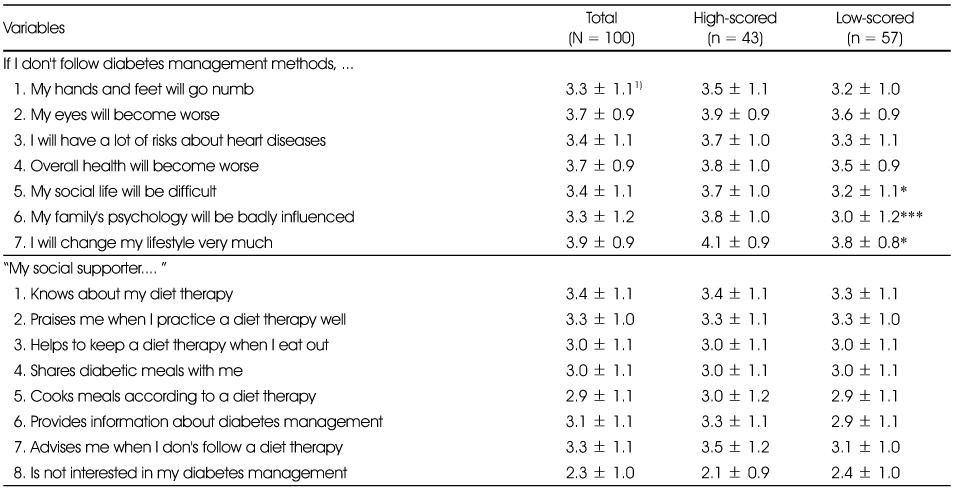Needs Assessment for Web-based Self-management Program by the Nutrition Knowledge Levels of Diabetic Patients
Article information
Abstract
This study was conducted to assess needs of self-management nutrition program for diabetic patients. The survey was conducted among 100 diabetic patients, and the mean age of the subjects was 54.2 years old. Thirty three percent of the subjects were diagnosed diabetes less than 2 years ago. The average nutrition knowledge score about diabetes was 10.2 point, and percentages of correct answers were very high in 'foods rich in fiber' (97.0%), 'relevance of exercise and insulin' (97.0%), 'quantity of insulin injection' (91.0%), and 'diabetes menu' (91.0%). The sources of nutrition information were hospitals/healthcare centers (56.1%), TV/radio (19.2%), and internet (13.1%). Sixty nine percent of the subjects have experienced nutrition education on subjects as 'menu planning skills' (22.4%), 'selecting foods' (22.4%), 'relevance of blood glucose and eating foods' (21.5%) by personal counseling (54.4%). The total score of eating behavior was higher after diagnosed diabetes (35.3) than before (30.0) (p < 0.001). The preferred topics in developing diabetes nutrition information websites were 'diabetes mellitus', 'relevance of blood glucose and foods', and 'selecting foods for diabetes'. The subjects wanted the websites developed by 'using mainly illustrations, pictures, tables' (22.8%) and 'using simple design' (19.6%). The preferred contents in developing diabetes self-management nutrition program were 'dietary life diagnosis', 'chronic disease risk diagnosis', 'calorie control by selecting foods and cooking skills', and 'dietary assessment'. In designing the program, the subjects' most wanted designs were 'be handy and simple in using' (29.3%), 'using simple design' (17.9%), and 'using mainly illustrations, pictures, tables' (15.7%).
Notes
This work was supported by Basic Science Research Program through the National Research Foundation of Korea(NRF) funded by the Ministry of Education, Science and Technology (MEST) (2010-0017210).






